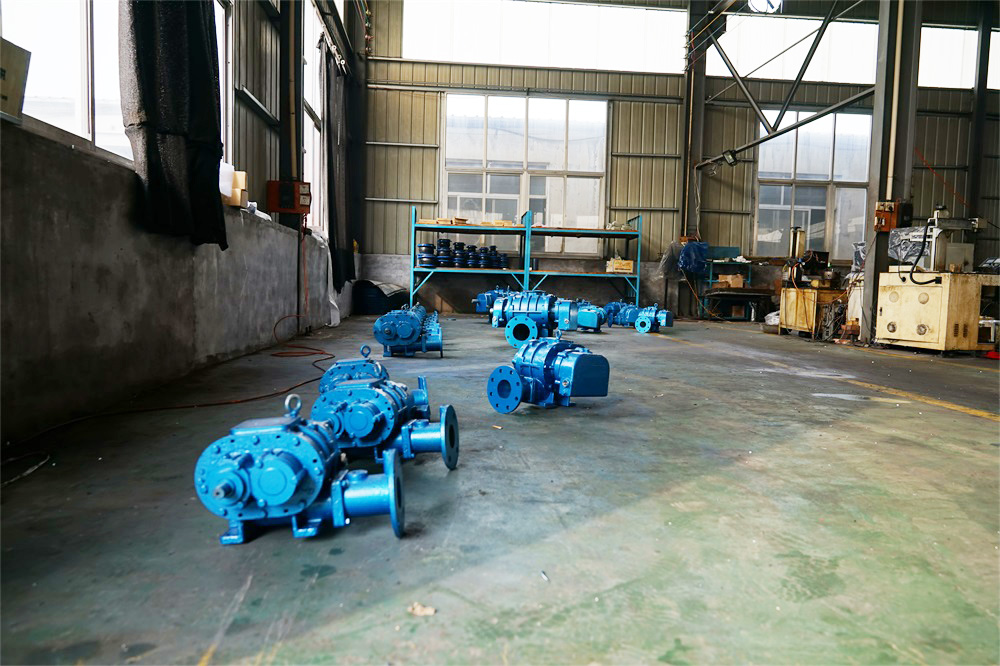1.開機(jī)順序有誤
1. Wrong startup sequence
開機(jī)時(shí)先送風(fēng)后放料�,如果操作有誤��,順序顛倒���,會(huì)使系統(tǒng)不暢��,有可能出現(xiàn)返料現(xiàn)象��。一般在正常輸送時(shí)�����,先通風(fēng)�����,在不帶料的情況下����,讓系統(tǒng)空吹一段時(shí)間,將原來系統(tǒng)下的料沖出管道�����,不于出現(xiàn)堵料現(xiàn)象����。
When starting the machine, the air is supplied first and then the material is discharged. If the operation is wrong and the sequence is reversed, the system will be blocked and the material may be returned. In general, during normal transportation, ventilation should be carried out first. Under the condition of no material, the system should be allowed to air for a period of time to flush the material left by the original system out of the pipeline, so as not to block the material.
2.關(guān)機(jī)順序不正確
2. The shutdown sequence is incorrect
關(guān)停料泵時(shí)先停料后停風(fēng),在停送操作時(shí)由于操作不熟����,若先停機(jī)后停料��,會(huì)造成管道內(nèi)有積存的物料��,下次開機(jī)時(shí)會(huì)導(dǎo)致阻力增大����。故要注意操作順序�����,不能誤操作�����。
When stopping the material pump, stop the material first and then stop the air. Due to the inexperienced operation during the stopping operation, if you stop the material first and then stop the material, there will be accumulated material in the pipeline, and the resistance will increase when you start the next time. Therefore, pay attention to the operation sequence and do not operate by mistake.

3.換庫風(fēng)閥開關(guān)順序不妥
3. The opening and closing sequence of the air valve for changing the warehouse is incorrect
水泥輸送系統(tǒng)中����,在入庫端安裝有換庫閥門,在換庫時(shí)應(yīng)當(dāng)先開要入庫的閥門���,再關(guān)閉庫滿的閥門�����,其目的是讓氣力輸送系統(tǒng)始終暢通��。若是先關(guān)閉庫滿的閥門����,后開入庫的閥門��,會(huì)造成系統(tǒng)正壓上升���,系統(tǒng)阻力增加��,羅茨風(fēng)機(jī)阻力加大����,負(fù)荷增加��,同時(shí)使物料在泵內(nèi)向上返料��,泵上方的水泥料罐出現(xiàn)憋氣��。
In the cement conveying system, the warehouse changing valve is installed at the warehousing end. When changing the warehouse, the valve to be stored in the warehouse should be opened first, and then the valve to be filled in the warehouse should be closed. The purpose is to keep the pneumatic conveying system unblocked. If the valve in the warehouse is closed first and then the valve in the warehouse is opened, the positive pressure of the system will rise, the resistance of the system will increase, the resistance of the Roots blower will increase, and the load will increase. At the same time, the material will return upward in the pump, and the cement tank above the pump will suffocate.
4.開停頻繁
4. Frequent start and stop
在調(diào)試過程要摸索送料閥門的開度�����,調(diào)節(jié)手柄,當(dāng)輸送量與磨機(jī)產(chǎn)量相匹配時(shí)�,記下手柄旋轉(zhuǎn)的角度位置。但一般的操作者較保守�,為防止泵上方的料倉滿倉出現(xiàn)溢料,往往將送料閥門開得大�����,這易導(dǎo)致泵上方料位不足���,只好停泵����,等料位達(dá)到需求后再開泵�����,這樣造成料泵.開開停停較頻繁�����。每次開停�,對(duì)風(fēng)機(jī)不利,同時(shí)對(duì)濾布也有影響����,濾布一旦因此出現(xiàn)漏洞����,停料停風(fēng)后��,氣室沒有正壓�����,料會(huì)沿濾布孔洞漏入氣室��,使其積料堵塞�����。
In the process of commissioning, the opening of the feeding valve should be felt, and the handle should be adjusted. When the conveying volume matches the output of the mill, the rotation angle of the handle should be recorded. However, the general operator is conservative. In order to prevent the overflow of the hopper above the pump, the feeding valve is often opened too large, which may lead to insufficient material level above the pump, so the pump has to be stopped, and the pump can only be started after the material level reaches the demand, which leads to frequent start and stop of the material pump. Each start and stop is not good for the fan, but also has an impact on the filter cloth. Once the filter cloth has a leak, the air chamber has no positive pressure after the material stop and the air stop, and the material will leak into the air chamber along the hole of the filter cloth, causing its accumulated material to be blocked.

